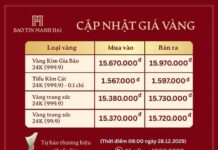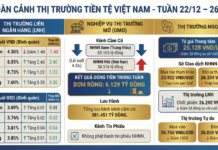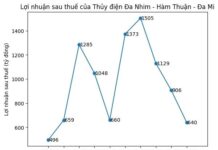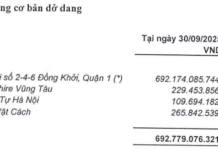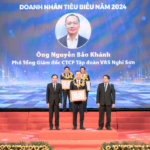At the socio-economic meeting held in July 2025, Mr. Nguyen Minh Nhut, Director of the Department of Agriculture and Environment of Ho Chi Minh City, proposed maintaining the land price framework that Ho Chi Minh City, Binh Duong, and Ba Ria – Vung Tau (pre-merger) had established. This integrated framework will serve as the new land price framework for the expanded Ho Chi Minh City, effective from January 1, 2026.
According to Mr. Nhut, prior to the merger, these localities had finalized projects to develop land price frameworks following the enactment of the Land Law 2024. Ho Chi Minh City, in particular, had completed the construction of its land price framework based on the appraisal of the Department of Finance. However, due to the merger, the project will now be submitted to the People’s Committee of the new Ho Chi Minh City for approval.
In Binh Duong, a decision on construction unit prices has been issued, adjusting land prices according to location and specific land valuation in the area.

Proposal to use the three pre-merger localities’ land price frameworks as the basis for the new Ho Chi Minh City’s initial land prices.
In Ba Ria – Vung Tau, the Provincial People’s Committee approved a project to develop a land price framework applicable from January 1, 2026, as of June 4, 2025.
Mr. Nhut further highlighted that, prior to the merger, all three provinces and cities had issued decisions to adjust their land price frameworks according to Clause 1, Article 257 of the 2024 Land Law and Article 17 of Decree No. 71/2024. These adjustments were valid until December 31, 2025. The land prices were determined based on specific routes and are currently being applied to fulfill financial obligations related to land.
Additionally, with less than four months remaining until the deadline, it would be challenging to develop a new land price framework for the expanded Ho Chi Minh City.
To meet the deadline for the initial land price framework for the new Ho Chi Minh City, which is slated for announcement and implementation from January 1, 2026, the department proposed several options and recommendations to the Ho Chi Minh City People’s Committee. These include approving the construction, adjustment, modification, and supplementation of the land price framework and specific land prices within the city, building on the approved rates of the three pre-merger areas, and applying them to each respective region for budgeting purposes.
Concurrently, they proposed that the city approve the project to develop the initial land price framework and select a consulting unit through a designated bidding process. Furthermore, the department recommended streamlining the approval process for the land price framework.
The Department of Agriculture and Environment presented two options, favoring the second option, which entails maintaining the pre-merger land prices and integrating them into a unified land price framework for the expanded Ho Chi Minh City, effective from January 1, 2026, until the new city administration issues a replacement framework.
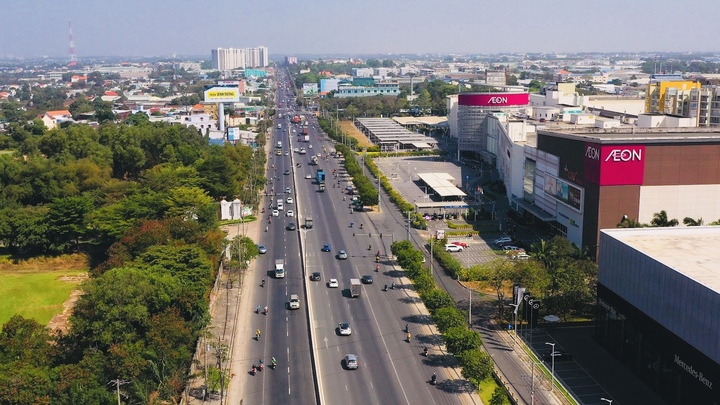
In Binh Duong, land prices in many areas are now on par with Ho Chi Minh City.
This proposal is supported by four key reasons: Firstly, the land price frameworks of Ho Chi Minh City, Binh Duong, and Ba Ria – Vung Tau have all been recently adjusted and officially issued in accordance with regulations, and they are currently within their valid implementation period until the end of 2025.
Secondly, given the slow recovery of the real estate market following an extended downturn, maintaining the current land prices serves as a necessary stabilizing measure, providing a sense of security and a reasonable investment environment for businesses and residents alike.
Thirdly, continuing to utilize land prices that were designed to suit the pre-merger localities – now divided into regions within the integrated land price framework – will foster a stable investment environment, accurately reflecting each area’s land absorption capacity.
Finally, adopting the adjusted land price frameworks is essential to allow sufficient time for the preparation of a unified land price framework for the entire expanded Ho Chi Minh City. Significant adjustments or the development of a new land price framework should only be considered after a period of organizational stability, with comprehensive data availability, and in synchronization with the entire merged territory.
“Maintaining the land prices of the former regions is the optimal choice. Integrating the land price frameworks of Ho Chi Minh City, Binh Duong, and Ba Ria – Vung Tau for the 2026 land price framework of the new Ho Chi Minh City is a prudent decision, in line with both legal requirements and practical considerations,” emphasized Mr. Nhut.
A Fresh Proposal for the Can Gio Bridge Project: A $450 Million Vision
“Investors are proposing an exciting new project: a 7.3-km long Can Gio Bridge, totaling over VND 10,500 billion in investment, utilizing the build-transfer model. This ambitious infrastructure project aims to connect the southern area of Ho Chi Minh City with Can Gio, offering a much-needed alternative to the Binh Khanh ferry.”






